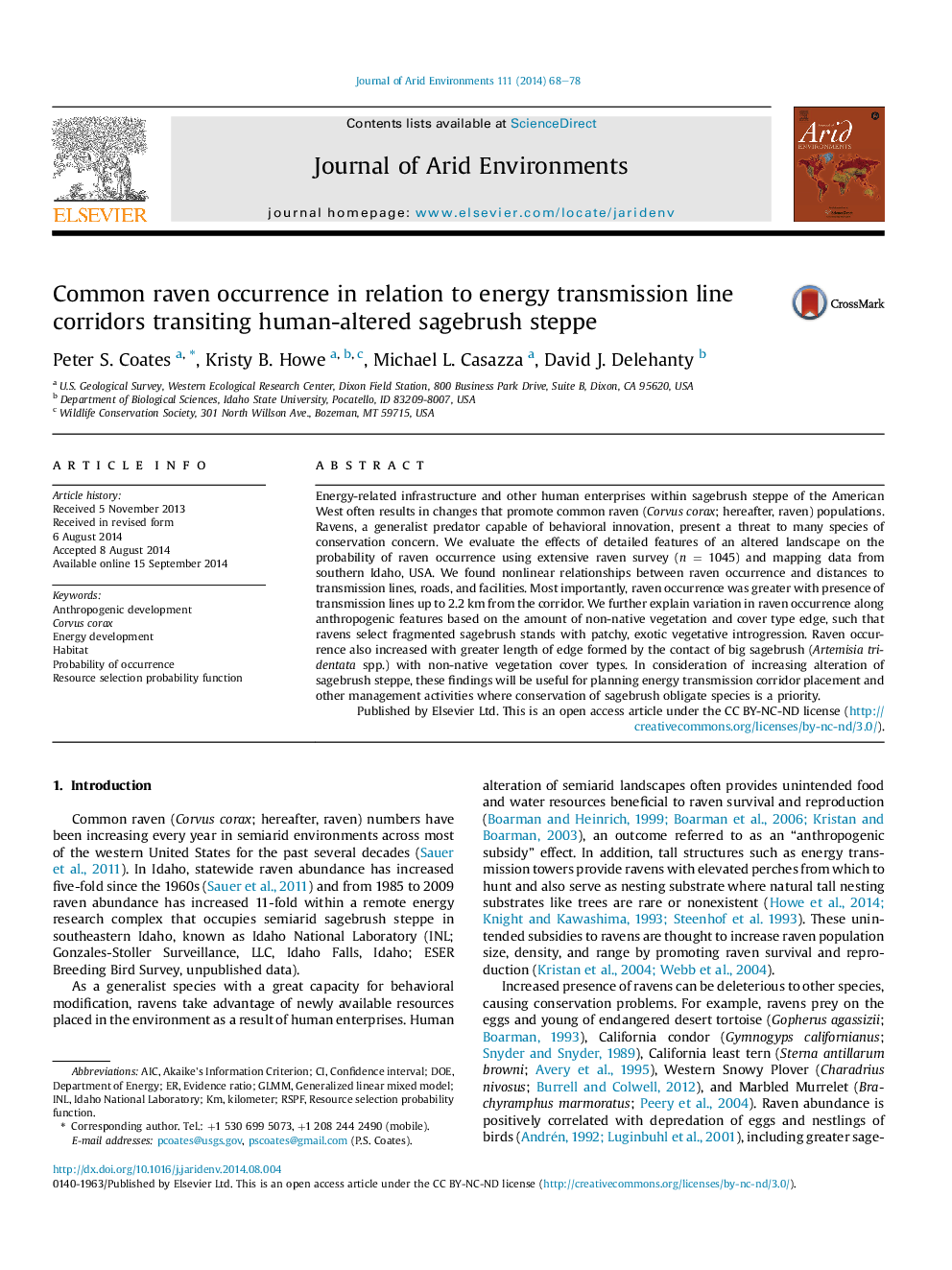| Article ID | Journal | Published Year | Pages | File Type |
|---|---|---|---|---|
| 6303456 | Journal of Arid Environments | 2014 | 11 Pages |
Abstract
Energy-related infrastructure and other human enterprises within sagebrush steppe of the American West often results in changes that promote common raven (Corvus corax; hereafter, raven) populations. Ravens, a generalist predator capable of behavioral innovation, present a threat to many species of conservation concern. We evaluate the effects of detailed features of an altered landscape on the probability of raven occurrence using extensive raven survey (n = 1045) and mapping data from southern Idaho, USA. We found nonlinear relationships between raven occurrence and distances to transmission lines, roads, and facilities. Most importantly, raven occurrence was greater with presence of transmission lines up to 2.2 km from the corridor. We further explain variation in raven occurrence along anthropogenic features based on the amount of non-native vegetation and cover type edge, such that ravens select fragmented sagebrush stands with patchy, exotic vegetative introgression. Raven occurrence also increased with greater length of edge formed by the contact of big sagebrush (Artemisia tridentata spp.) with non-native vegetation cover types. In consideration of increasing alteration of sagebrush steppe, these findings will be useful for planning energy transmission corridor placement and other management activities where conservation of sagebrush obligate species is a priority.
Keywords
Related Topics
Physical Sciences and Engineering
Earth and Planetary Sciences
Earth-Surface Processes
Authors
Peter S. Coates, Kristy B. Howe, Michael L. Casazza, David J. Delehanty,
